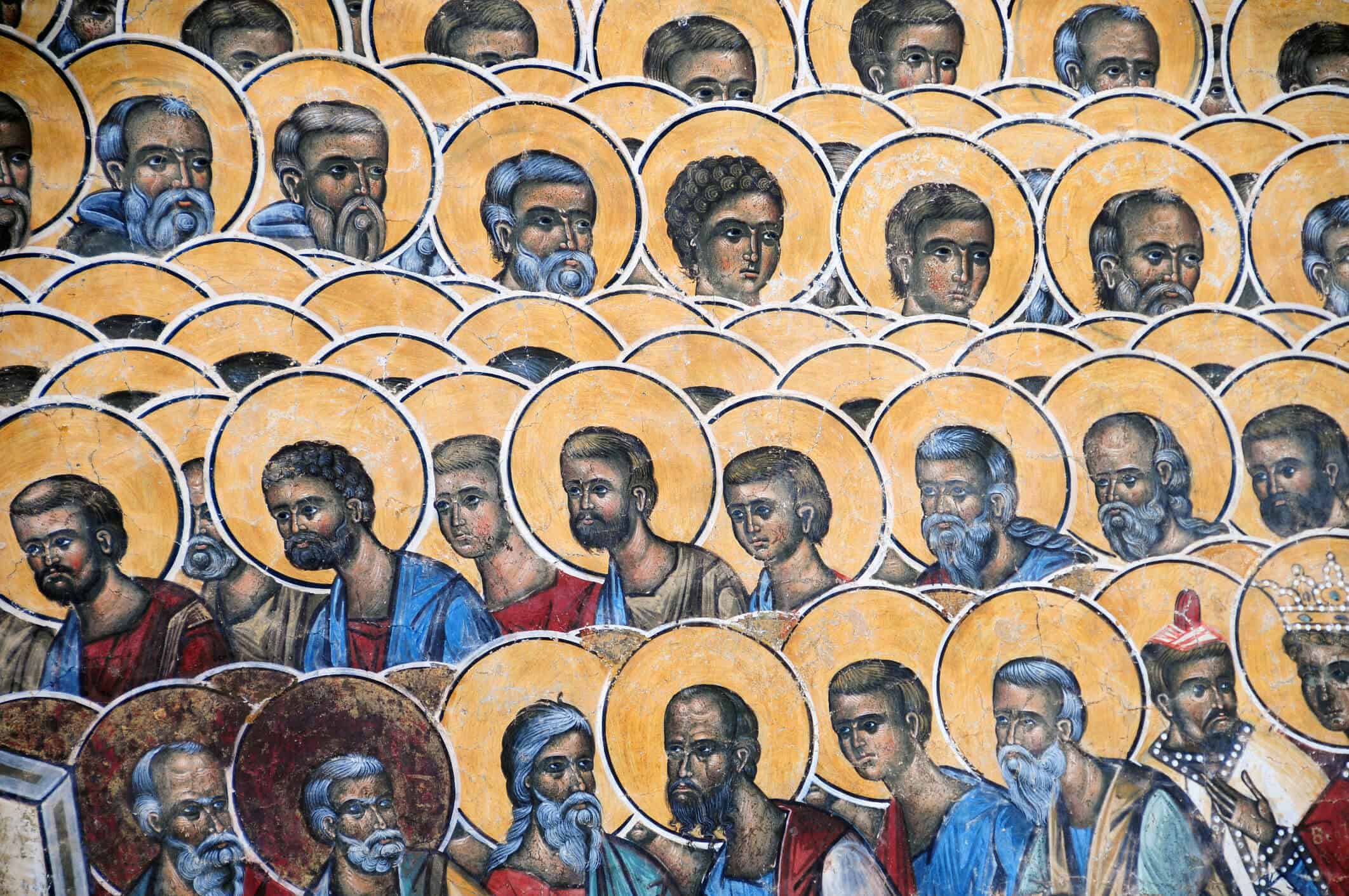August 4
St. John Vianney
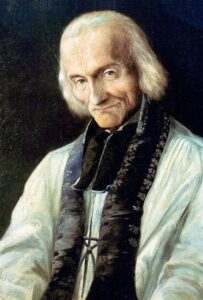
“We are each of us like a small mirror in which God searches for His reflection.”
St. Jean-Baptiste Vianney
Jean-Baptiste Vianney was born to a farm family, and was the heir to a meager formal schooling, which left him ill-prepared to pursue his desire of becoming a priest. Although he did enter the seminary, he was forced to leave because of his inability to learn Latin. He was drafted into Napoleon’s army, from which he eventually deserted and returned home. A general amnesty for deserters was declared in 1810, and he resumed his studies. He was judged to be too slow to be a priest, but after lengthy struggles with his studies, and with the intervention of Abbe Bailey of Ecully, he was finally ordained in 1815, more for his piety than his learning. He was assigned to Ecully as Bailey’s assistant.
In 1818 he was reassigned to the parish of Ars-sur-Formans, France, a tiny village of 230 souls near Lyons, where he became the pastor or Cure of Ars. The people of Ars were living comfortable lives for the most part, and were very lackadaisical in their faith. He began visiting his parishioners, especially the sick and poor, spent days in prayer before the Blessed Sacrament, did penance and fasted for his parishioners, and lead by example.
The main part of his battle for the souls of his villagers was fought in the confessional. He had been gifted with the ability to discern spirits, and was able to easily read souls, which, combined with his gentle nature, gave him the ability to reconcile many penitents with God. As his reputation spread, more and more penitents sought him out. By 1855, more than 20,000 people a year made a pilgrimage to Ars, to confess to him.
He was Cure of Ars for 40 years, often spending 16 to 18 hours a day in the confessional. His meager few hours of sleep each night were frequently interrupted by diabolical attacks. Refusing all honors offered to him, Jean-Baptiste died at Ars in 1859; his funeral was attended by 300 priests and 6,000 mourners. He was canonized by Pope Pius XI in 1925, who named him a patron of parish priests and of confessors.
August 8
St. Dominic Guzman
Dominic Guzman was born of wealthy Spanish nobility in 1170 in Caleruega, Spain. He was the son of Felix Guzman, the royal warden of the village; and Blessed Joan of Aza. Joan had difficulty conceiving, and prayed at the shrine of Saint Dominic of Silos who had a tradition of patronage of that problem; when she became pregnant she named the child Dominic in honor of the Saint. While pregnant, Blessed Joan mother had a vision that her unborn child was a dog who would set the world on fire with a torch it carried in its mouth; a dog with a torch in its mouth became a symbol for the Order which he founded, the Dominicans. At Dominic’s baptism, Blessed Joan saw a star shining from his chest, which became another of his symbols in art, and led to his patronage of astronomy.
Dominic was an exemplary student, and studied philosophy and theology for 10 years at the University of Palencia. In 1194 he joined a Benedictine order called the Canons Regular in Osma, and became the superior of the chapter seven years later. In 1203 he and his bishop were sent to the south of France, to an apostolate among the Albigensian heretics. The Albigensians believed that all material things were intrinsically evil, and Dominic’s austerity – practiced for completely different reasons – appealed to them. His debates with Albigensians converted many of them back to the faith.
In July 1215, Dominic was granted permission to form his own religious order tp promote morality and convert heresy. He founded the Order of Friars Preachers (Dominicans) a group who followed a Rule of Life which included a strict routine of discipline, including prayer and penance. In 1217, Pope Honorius III dubbed Dominic and his followers “The Order of Preachers.” His order was charged with the reform of the religious orders of women in Rome, who had become lax in their practice. To recognize his success, the Pope rewarded Dominic with a new church, the basilica of Santa Sabina. The basilica remains the headquarters of the Dominican order to this day.
Dominic as credited with many miracles during his life, including bringing four people back from the dead. Legend says that Dominic received a vision of a beggar who, like Dominic, would do great things for the Faith. Dominic met the beggar the next day. He embraced him and said, “You are my companion and must walk with me. If we hold together, no earthly power can withstand us.” The beggar was Saint Francis of Assisi.
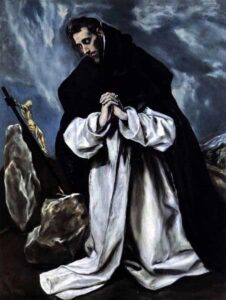
I could not bear to prize dead skins, when living skins were starving and in need.
St. Dominic, after selling books inscribed on parchment (sheepskin) and giving the money to the poor.
August 9
St. Teresa Benedicta of the Cross
(Edith Stein)
Born into an Orthodox Jewish family, Edith Stein renounced her faith as a young teenager in 1904 and became an atheist. At University she took a degree in philosophy at the age of 25 and became a prominent professor of philosophy at Freiburg.
It was through an encounter with a young widow that Edith first “came face to face with the cross and the divine strength it gives to those who bear it.” Shortly after, she read the autobiography of Saint Teresa of Avila – in a single night. She was profoundly affected; The next day, she bought a Catholic catechism. She converted to Catholicism on January 1, 1922.
She became a leading speaker and writer in the Catholic Womans Movement in Germany. Because of her Jewish ethnicity, she was forced to leave her teaching post after the Nazi rise to power. In 1935, she entered the Carmel of Cologne, taking the name Teresa Benedicta of the Cross. As the Jewish pogroms began under Hitler, Teresa consciously identified herself with the destiny of her people and offered herself for their salvation.
In 1938, she moved to a convent in Echt, Holland. Four years later, the Nazis responded to vocal criticisms by the Dutch bishops conference by arresting all Catholic converts of Jewish descent. Teresa and her sister, who had been with her in the convent, were arrested on August 2, 1942. transported to Auschwitz, where they died in the gas chamber a week later.
A Carmelite notice of Teresa’s death declared, “She has been called to God who accepted her sacrifice, which will bear much fruit in the people for whom she prayed, suffered, and died.”
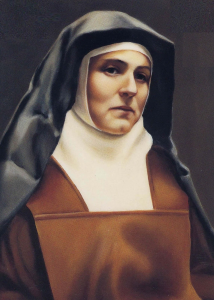
“The world doesn’t need what women have, it needs what women are.”
St. Teresa Benedicta
August 10
St. Lawrence of Rome
Deacon Lawrence was one of seven deacons in Rome who were in charge of giving help to the poor and the needy. At that time, in the third century, the emperor Valerian began a great persecution of Roman Christians, decreeing that all bishops, priests, and deacons were to be arrested and executed. When the bishop of Rome Pope St. Sixtus was arrested and condemned to death, Lawrence followed him weeping, “Father, where are you going without your deacon?”
Before this, Lawrence correctly perceived the avaricious nature of Emperor Valerian. The members of the Christian community had unswervingly obeyed the Gospel message by supporting the poor and needy of the city. Unbeknownst to the authorities, Lawrence began distributing to the poor of Rome the remaining money and treasures of the church and of its members who had been arrested.
When he himself was arrested, Valerian offered him clemency if he would bring to Valerian all of the fabled gold and silver treasures of the Church. At the end of the three days that Lawrence had requested to do this, Lawrence brought before him all the poor and needy of Rome, saying, “Here is the church’s treasure!”
For his witness, he was ordered to be burned on a grating over a slow fire. Tradition holds that the execution of this lowly deacon sparked massive conversions to the Christian faith, so impressed were the residents of Rome with Lawrence’s living witness to the message of Jesus to recognize Him in the poor of the world. There is a legend that the ashes of his burned body were dispersed by the winds, and appear at different places around the world on his feast day
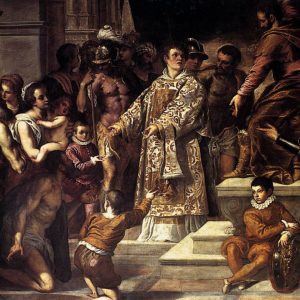
Behold in these poor persons the treasures which I promised to show you; to which I will add pearls and precious stones, those widows and consecrated virgins, which are the Church’s crown!
St. Lawrence of Rome
August 12
St Jeanne de Chantal
St. Jeanne (Jane) Frances de Chantal (1572–1641) was born in Dijon, France. Her mother died when she was 18 months old, and her father, head of parliament at Dijon, France, became the main influence on her education. She lived up to her noble status as a refined, cheerful, and beautiful woman. At the age of twenty-one she married Baron Christophe de Chantal and together they had six children, three of whom died in infancy. She married into, not only a title, but also a household in deep debt; she managed every detail of the Baron’s estate, finally bringing its finances into order.
She was strong in her faith, having daily Mass said in her castle and giving alms to the poor. After seven years of marriage, her husband was killed in a hunting accident. She was deeply dejected, but to protect the estate of her children, she was obliged to live with her vain, fierce, extravagant and ill-tempered father-in-law for seven years. She had a vision of a man who would be her spiritual director, and during Lent of 1604 she met St. Francis de Sales. She wanted to become a nun but he persuaded her to defer this decision. To her private vow of chastity she took a vow of obedience to his direction.
Francis told Jane of his plan to found an order of women dedicated to charitable works. At the age of forty-five, on Trinity Sunday, June 6, 1610 she and Francis founded a religious institute for women, the Congregation of the Visitation, which was to exemplify the virtues of the Virgin Mary at the Visitation: meekness and humility. The Visitation sisters accepted women who were rejected from other religious orders due to age or illness, who were widows or lay women. They were not a cloistered order at first, but after experiencing opposition to the order, Francis de Sales was obliged to make it a cloistered community following the Rule of Saint Augustine.
She underwent many great trials, including the death of Francis de Sales and many of her close family and friends. When a plague ravaged France, killing her daughter-in-law and son-in-law, she encouraged the local authorities to make great efforts for the victims of the plague, and she put all her convent’s resources at the disposal of the sick. In addition to her personal trials, she had to undergo great trials of the spirit—interior anguish, darkness, and spiritual dryness. She traveled extensively to found new Visitation houses, having established eighty-six at the time of her death on December 13, 1641.

Hold your eyes on God and leave the doing to him. That is all the doing you have to worry about.
St Jeanne de Chantal
August 14
St. Maximilian Kolbe
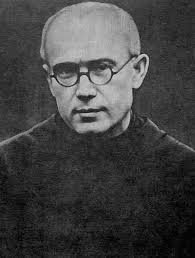
“If anyone does not wish to have Mary Immaculate for his Mother, he will not have Christ for his Brother.”
St. Maximilian Kolbe
St. Maximilian Kolbe was born in Poland in 1894 and at about the age of 10 had a vision of the Virgin Mary. She offered him a white crown and a red crown, representing purity and martyrdom. He chose both, a foreshadowing of his life to come. In 1910, he joined the Conventual Franciscan Order. He studied in Rome and traveled to Japan and India as a missionary, but poor health forced him to return to Poland in 1936. During WWII he welcomed thousands of refugees, including over 2,000 Jews, and aided them in escaping the mounting tyranny.
Kolbe’s monastery served as a publishing house for anti-Nazi pamphlets and tracts. Because of this and his good works, he himself was arrested by the Nazis in 1941 and was taken to the Auschwitz concentration camp. After a prisoner escaped toward the end of his second month in the camp, ten inmates were chosen at random for execution. He offered his life for that of one of the prisoners and was condemned to a slow death in a starvation bunker. Kolbe led the condemned in prayers and songs to Our Lady for two weeks, calming and comforting his fellows.
Kolbe was the last of the prisoners to remain alive after two weeks. On August 14, 1941, he was given a lethal injection of carbolic acid. He was canonized as a Saint and Martyr of Charity in 1982.
August 18
St Alberto Hurtado Cruchaga
A Chilean native, Alberto lost his father at age four. His impoverished mother sent him to live with a series of relations. He received a scholarship to study with the Jesuits, and then, in 1923, he entered the order. After ten years of study in Spain and Belgium, Alberto was ordained and returned to Chile. He taught theology at the college and catechism to children. He gave retreats and led the youth of Catholic Action.
In 1944, Alberto had an encounter with a sick homeless man that prompted a passionate homily at his next retreat. “Christ is without a home!” he told the women present. “Shouldn’t we want to give him one, those of us who have the joy of a comfortable home, plenty of good food, the means to educate and assure the future of our children?” The women acted at once, pooling their funds to help Alberto found the first of the homes he called El Hogar de Cristo, “the hearth of Christ.” These were not mere shelters, but true hospices, where the poor and homeless were welcomed, warmed, fed, and taught. The homes spread through Chile. From 1945 to 1951, a stunning 850,000 children were helped.
In 1952, Alberto was diagnosed with advanced pancreatic cancer. He died only a few months later, after intense suffering. “I am content, O Lord, I am content,” was his constant prayer.
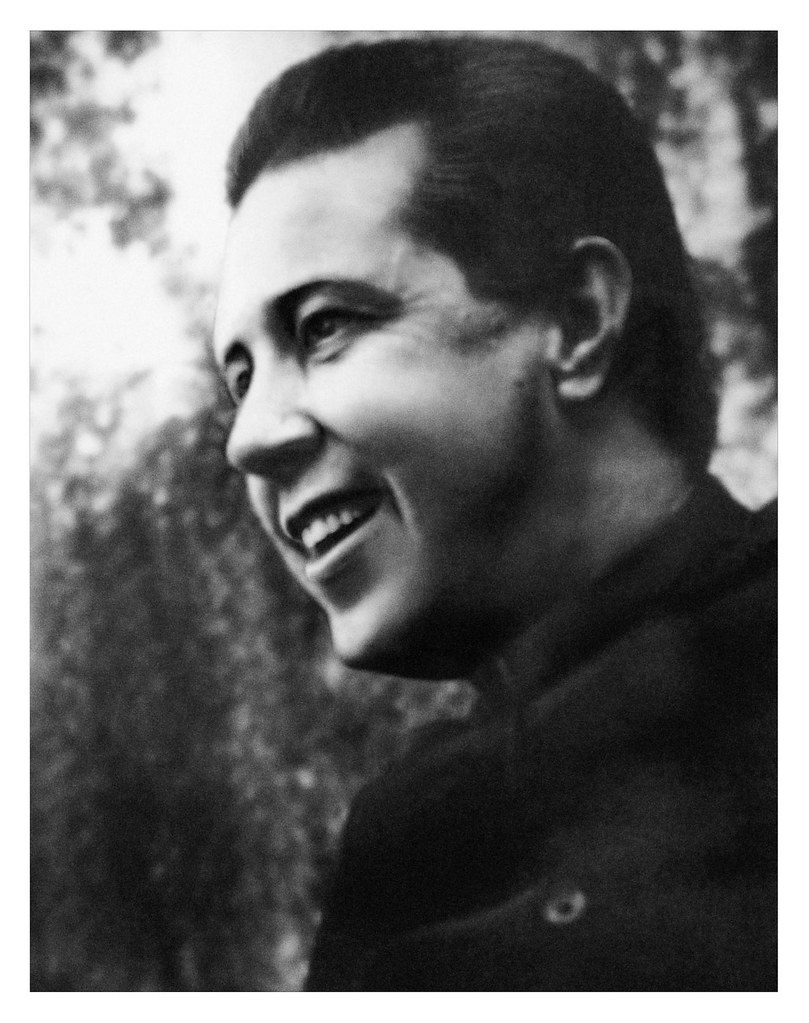
I hold that every poor man, every vagrant, every beggar is Christ carrying his cross. And as Christ, we must love and help him. We must treat him as a brother, a human being like ourselves.
St Alberto Hurtado Cruchaga
August 20
St. Bernard of Clairvaux
Bernard was born into the nobility in Burgundy, France. His pious parents instilled in him their own piety, which was noticeable at an early age. Following the death of his mother when he was 22, he fled the material world with four of his brothers and 25 friends to join a Cistercian abbey, He surrendered himself to the austerity of that order and after a year, professed his vows in that order.
After several years, he was sent to establish a new abbey in the Valley of Wormwood. As its abbot, he renamed the locale “Claire Vallée” – Valley of Light – which name evolved into the now-famous Clairvaux. It eventually grew from the original 12 monks to a community of 700. This b egan his active religious life which made him perhaps the most influential person of the 12th century.
He founded numerous other monasteries, and revised and reformed his own Cistercian order. Although he refused several bishoprics that were offered to him, his skill as a mediator led to his being ordered on several diplomatic missions on behalf of the popes. He famously intervened in a full-blown schism and settled it in favor of the Roman pontiff Innocent II against the antipope Anacletus II. When he was asked to do so by Pope Eugene III, one of his former monks, he traveled throughout France and Germany raising support for the disastrous Second Crusade.
Blamed personally for that Crusade, Bernard’s last few years were melancholy ones. He felt it his duty to write the Pope an apology for the Crusade, blaming its failure on the lack of sanctity and the sins of the Crusaders and their leaders. He died after 40 years as a monk, in the year 1153. He is best remembered for his revival of lectio divina in the 163 monasteries he founded, as well as his theology of worship spaces and music, and his eloquent devotion to the Virgin Mary. He was so famous for the latter that Dante chose him as his guide in the last book of the Divine Comedy.
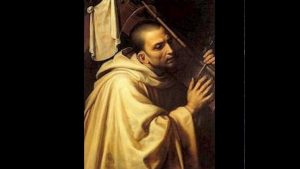
“There are those who seek knowledge for the sake of knowledge; that is Curiosity.
St. Bernard of Clairvaux
“There are those who seek knowledge to be known by others; that is Vanity.
“There are those who seek knowledge in order to serve; that is Love.”
August 23
St. Rose of Lima
St. Rose was one of 10 children born of Spanish parents in Lima, Peru, although her mother had Incan blood as well. Rose was beautiful and very pious. She was so sensitive to compliments on her physical appearance that, to combat vanity, she disfigured her face with pepper and lime. When her father’s finances deteriorated, Rose grew flowers to help support them, and used her skill at needlework to help support her family.
When her parents began to seek a suitable marriage partner, twelve-year old Rose insisted that she was meant for Christ. Her parents desired that she marry, but she refused, and lived as a recluse in a hut in her parent’s garden. Her parents were confused by her ardor, but Rose was determined. Seeking to dissuade her suitors, she rubbed pepper on her face. When someone commented on her lovely hands, she coated them with lime.
From a very early age, Rose sought to emulate the exuberant love of Saint Catherine of Siena. When Rose was twenty, she decided to join the Dominican Third Order to which St. Catherine belonged. Her prayer was intense and often ecstatic, and she dedicated her life to chastity and assisting the sick and poor. She inflicted severe penances on herself daily and endured disapproval and persecution from her family because of this, When she began to have visions and other mystical experiences, an evaluation by priests and physicians proved Rose’s experiences to be authentically supernatural.
But Rose remained attentive to others and eminently practical in her daily interactions. When she encountered the sick of the city, she brought them to her family house for care. When she saw the Spanish enslave the natives, she cried out in protest; the Spanish grew rich from Peru’s natural resources while Peruvians became impoverished . Like Catherine of Siena, she spoke out against the corruption of her day.
Rose had a great love for the suffering Lord and sought to imitate him. She wore a metal studded crown on her head as penance— and hid it beneath roses. She was greatly revered by the people, and at the time of her death, at the age of 31, her body could not be buried for several days due to the large crowds. After her death many miracles were attributed to her intercession. Rose of Lima was the first native-born saint from the Americas to be canonized.
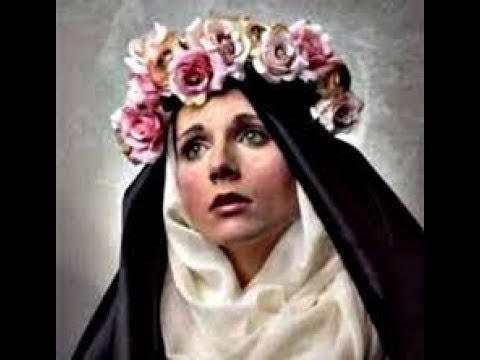
“When we serve the poor and the sick we serve Jesus. We must not fail to help our neighbors, because in them we serve Jesus.”
St. Rose of Lima
August 27
St. Monica

Son, nothing in this world now affords me delight. I do not know what there is now for me to do or why I am still here, all my hopes in this world being now fulfilled.
Saint Monica, about the conversion of her son Augustine
Monica was born in Tagaste, North Africa in 322 AD and was raised in a Christian family. She was given in marriage to a bad-tempered, adulterous pagan named Patricius. Though he was difficult, and his mother even more so, Monica won them both over with patience, and she had the joy of seeing both embrace the faith.
She became the mother of two, and more troubling was her eldest son, bright but lazy Augustine. As a teenager he went to Carthage, where he found the philosophy of the heretical Manichees – and a mistress. He returned home, spouting heresy, and Monica drove him from her table. Only a prophetic dream could convince her to take him back. Soon afterward, she consulted an unknown bishop, who reassured her: “It is not possible that the child of these tears should be lost.”
At the age of twenty-nine, Augustine went to Rome to seek work and his widowed mother followed. Monica convinced him to put off his concubine—with whom he now had a child– although he soon took up with another. She found an ally in Bishop Ambrose of Milan, whose teaching began to work on Augustine. She prayed constantly for the conversion of her husband (who converted on his death bed), and of her son (who converted after a wild life).
At last, his mother’s prayers, the bishop’s urgings, and his own incessant longings were fulfilled in a stunning moment of grace. Telling the story in his Confessions, Augustine praised God for the moment he was able to go to Monica and tell her that he wanted to be baptized. “You had turned her mourning into joy much more perfectly than she had ever hoped.” She died six months later in the year 387.
August 28
St. Augustine of Hippo
Saint Augustine of Hippo (born Aurelius Augustinus on November 13, 354 in Numidia) is considered to be the patron saint of brewers, because of his famous conversion from a life of parties, drunkenness, and wicked living. During his early life, he was immersed in the creature comforts of his morally, spiritually, and socially decadent society. He lived with a Carthaginian woman for 15 years, fathering a son Adeodatus out of wedlock. He was a brilliant orator, who found his living in teaching rhetoric, first in Carthage, then in Milan.
Through the prayers of his mother St. Monica (whose feast day is celebrated the day before his), and the influence of his mentor St. Ambrose, he finally became convinced of the truth of Christianity. One day, while despairing of his sins, he heard a child chanting, “Take up and read!” Picking up a book of Scriptures in the garden where he walked, he randomly opened to chapter 13 of St. Paul’s Letter to the Romans, where Paul admonishes them to leave behind licentious behavior and to put on Christ. He was moved to repentance and to a life of sanctity; he was baptized by St. Ambrose and, three years later, was ordained a priest. Upon his mother’s death in Italy, he returned to Africa, sold all his inheritance, and gave it to the poor. He founded a monastery, but shortly became the bishop of Hippo, holding that office for 34 years. Much of his time was spent in combatting the many heresies that sprang up, including Manichaeism, Donatism, Pelagianism, and others.
He is considered one of the most significant Christian thinkers since St. Paul. He was a prolific writer, his most important writings include his autobiographical Confessions (c. 400) and his philosophical The City of God (c. 413–426). His adaptation of classical thought and rhetoric to Christian teaching was foundational for much of Christian thought, from medieval and through modern times. He is considered one of the greatest of the thirty-six Doctors of the Church.
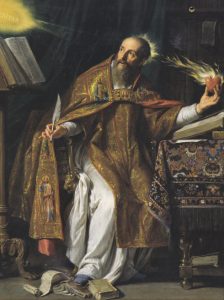
“What does love look like? It has the hands to help others. It has the feet to hasten to the poor and needy. It has eyes to see misery and want. It has the ears to hear the sighs and sorrows of men. That is what love looks like. ”
St. Augustine of Hippo
August 29
St. Jeanne Jugan
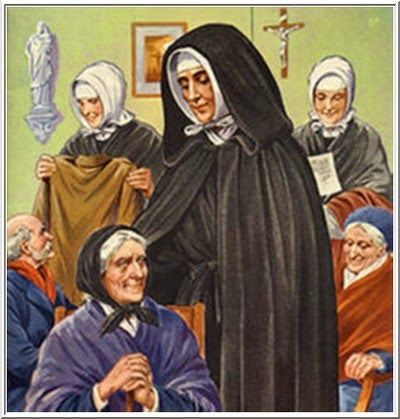
“Be kind, especially with the infirm. Love them well … Oh yes! Be kind. It is a great grace God is giving you. In serving the aged, it is he himself whom you are serving.”
St. Jeanne Jugan
Jeanne Jugan was born in Brittany, the sixth of eight children. Her father, a poor Breton fisherman, was lost at sea when she was four. Her mother took odd jobs to keep her children fed. Because of the persecutions that occurred during the French Revolution, she taught them the faith secretly.
Jeanne grew up working as a shepherdess and a maid. She took a job as a kitchen maid in the home of a devout Catholic, the Viscountess de la Choue, who took Jeanne with her when she visited the poor. Twice a young man proposed marriage, but she declined his offers, telling her mother, “God wants me for himself. He is keeping me for a work which is not yet founded.” She took jobs as a nurse, servant, and companion.
At forty-seven, Jeanne was living in an apartment with two other women. In the winter of 1839, she found Anne Chauvin, an old blind woman, on her step. She tucked the woman into her own bed and slept in the attic. From this time, the elderly poor became the center of her concern. Within two years, she had found the means to begin a twelve bed shelter and hospital for them; a year later, she found an unused building which she used to accommodate forty elderly in need. People called her and the women who joined her the “Little Sisters of the Poor.” Jeanne became “Mary of the Cross.”
Within a few years, a priest who was helping Jeanne lead the new community inexplicably removed her from her post and sent her to beg for the sisters. A few years after that, Jeanne was told to retire to the motherhouse, where she dwelt for twenty-seven years in obscurity. Although the younger sisters did not know she was their foundress, she taught them, nevertheless: “The poor are our Lord.” Jeanne died at eighty-six. Today her sisters serve in thirty-one countries. She was canonized in 2009.
